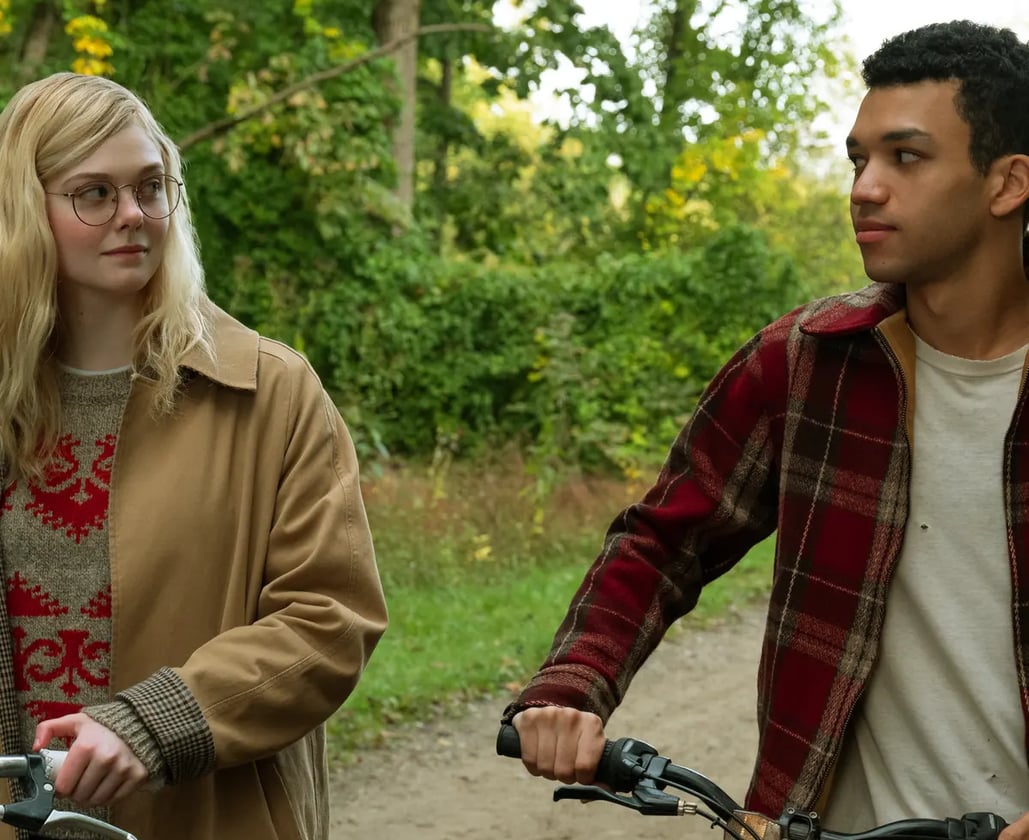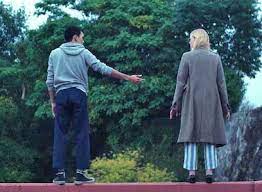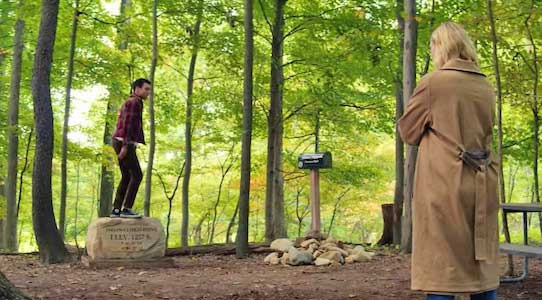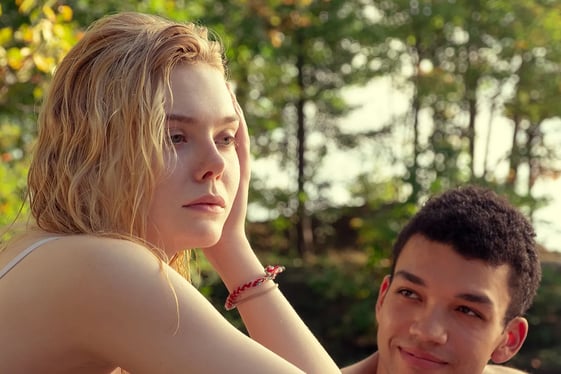All the Bright Places
Violet Markey and Theodore Finch are partners for a school project requiring them to explore their home state of Indiana. On their journey, they connect and eventually learn to heal when more tragedy strikes.
11/7/20235 min read


My post content
Introduction
Content warning overview: grief, suicide, depression, sexuality, mild violence – a more detailed content warning overview can be found here: https://www.imdb.com/title/tt3907584/parentalguide?ref_=tt_stry_pg
Besides their love alone, the story of Violet and Finch also focuses on Violet's journey with grief and survivor's guilt after her sister dies in a car accident and Finch's bipolar disorder and eventual suicide. But in many ways, the first few times they meet use location to draw connections between the world and the self and between two people. We are introduced to these characters, and they are introduced to each other, through the places they go to.
The Dark Places
The first place Violet and Finch meet occurs before they're paired together for the wandering project. She's standing at the edge of the bridge where her sister died, and when he recognizes her as his classmate, he stands on the bridge with her. He says "look what I can do", standing on one leg and smiling, which I guess is an attempt to make her laugh – which backfires. She angrily tells him to stop, and even though his smile fades, he coaxes her to step down from the ledge, and she agrees.
The second place they meet is another place of vulnerability. After seeing an Instagram story of him singing a song about a girl he met on a bridge (obviously her), she calls him and he asks to come over. They walk down her dimly lit street at night, and we don't see anything but them and vague houses in the background – neither the end or the beginning of the road is visible. He tells her he googled her, but her initial shock doesn't stop her from walking with him. She tells him she's not suicidal, and he laughs saying that whatever she is, he saved her life. He then tries to convince her they should be partners for the wandering project. She says no, but she seems to finally warm up to him when she tells him their classmates call him "the freak" at school, and he responds by saying their classmates like putting people in boxes. This resonates with her, as she tells him they don't like "messy."
These first two scenes share moody or dark backgrounds and situations that could be reasonable in a horror movie with different background music. But because of this, both scenes start the movie off with the pair in places of deep vulnerability – specifically, vulnerability for Violet at the site where her mother died and then in her neighborhood. In both these places of vulnerability, Finch is not the perfect gentleman. His antics scare her in the first scene and mildly weird her out in the second – but there's an understanding that they share in both scenes, despite the discomfort. Thus, the places in which they meet reflect Violet's vulnerability and a shared understanding – from her perspective.


The Bright Place (singular)
If the first two scenes are marked by their representations of Violet's vulnerability, then the next is characterized by its (seeming) separation from either character's identity. In other words, it seems the places they go for the wandering project don't have much personal meaning for either of them.
The first place they go for their wandering project is the "highest point in Indiana" – a rock that's barely the height of a stepping stool. He tells her the view the great from where he's standing, and once again coaxes her to join him on the rock. As usual, she begrudgingly accepts, and notes that this is the "lamest thing" she's ever seen. As she and Finch burst into laughter, it's clear that this is first scene where she genuinely does laugh – and she does it from a vantage point only barely higher than where she was standing before. When he tells ehr she won't go to hell for laughing, she tells him why she was at the bridge in the first place – because it was her sister's 19th birthday. She asks him why he was there, and he just responds by saying "I like to run." Their conversation ends just as anticlimactically as the "highest point in Indiana", with a staring contest (not a deeper conversation) ending the scene.
The irony of the place they visit gives it a carefree, almost idyllic characterization that's only supported by the sunlight forest and near perfect clearing around the rock. The place seems almost utopian – and so does its effect on Violet, getting her to laugh genuinely for the first time in this film. In short, it seems almost too good to be true. But perhaps the whole point of this scene is that life isn't as serious as we think it needs to be – it can be anticlimactic and carefree, even for just a moment. We can have moments of pure, idyllic joy even as we're struggling – and that's more realistic than refusing to let ourselves live.


"Violet Markey... I was here."
The second place Violet and Finch go to for their wandering project is a graffitied wall that reads "before I die I want to..." Finch silently fills in a blank with "stay awake", as Violet writes "be brave" in chalk. He asks her to tell him about her sister, and she says that she was bossy like Finch, hated reading, and was her best friend. When they joke about the epitaphs they would put on their graves, she says hers would be "Violet Markey. I was here" and Finch laughs, saying he'll have to steal that from her.
Once again there seems to be a connection between Violet's vulnerability/awareness of mortality and night-time. But more importantly, the graffiti wall and epitaph conversations highlight concerns (or maybe just an awareness) of being remembered after you die. The semi-permanence of graffiti seems to create the illusion of immortality, when in reality, something like chalk can easily be washed away or painted over. However, I think the real point of this scene has less to do with being remembered forever, and more to do with being remembered by the people that matter. Obviously, Violet (and perhaps to some extent Finch) has a desire to just be recognized for existing. But as her sister's favorite poet says "we don't remember days, we remember moments" – Violet remembered she was always told that whenever she was having a bad day. Days are more permanent than moments – they can be marked on a calendar, taught in schools, standardized and preserved. But moments are intangible and context-specific – they won't matter the same to everyone. I think that's the purpose of the graffiti wall: immortalizing someone or something for a moment is temporary, but it's permanent for the people that matter.
What I think is especially interesting about all these scenes is that these are the main scenes that bring Finch and Violet from strangers to friends. They get to know one another mainly by unpacking Violet's vulnerability and trauma – which is extremely important to remember for the scenes to come.


Contacts
manduta@ad.unc.edu
